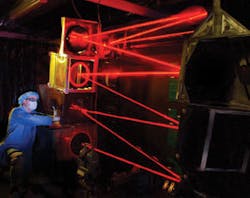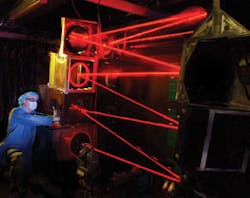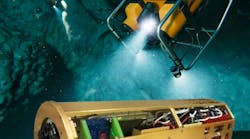By John Keller
KIRTLAND AFB, N.M. - Air Force researchers are asking industry to develop new enabling electro-optic technologies for the Airborne Laser system (ABL), which is designed to destroy ballistic missiles in flight.
Researchers are asking industry for a 20 kHz frame rate, low-noise wavefront sensing and tracking shortwave infrared camera, as well as for advanced supersonic diffusers for chemical oxygen-iodine lasers (COIL) on the ABL.
Making the requests are experts at the Air Force Research Laboratory (AFRL) Directed Energy Directorate (DE) at Kirtland Air Force Base, N.M.
The sensing and tracking shortwave infrared camera is for the Starfire Optical Range (SOR) for integration into an adaptive-optics brassboard test bed as a self-referencing interferometer (SRI) wavefront sensor.
Researchers want a camera consisting of a detector and housing, electronics necessary to amplify and digitize the detector signal, electronics housing, and cooling hardware.
This project, which will be in four overlapping phases, will be worth from $500,000 to $1 million per year over three years, officials say. Phase 1 is to design a readout integrated circuit (ROIC) and test chip. Phase 2 will cover layout, fabrication and test of the production ROIC chip. Phase 3 will cover camera electronics design, and Phase 4 will cover camera fabrication and integration with ROIC.
A significant goal of this effort, researchers say, is to cut the cost of production-unit cameras to less than today’s state-of-the-art cameras, as well as to build in scalability of the design architecture in frame rate and format.
Air Force researchers also are looking for advanced supersonic diffusers for the COIL. The developed designs should at the minimum be 90 percent of the pressure- recovery performance of a normal shock for typical COIL operating conditions at the laser cavity exit.
Proposals were to be in to the AFRL by June 22. The office in charge of the project is the Department of the Air Force, Air Force Materiel Command, AFRL-Directed Energy Directorate, 2251 Maxwell Ave., Kirtland Air Force Base, N.M., 87117. The solicitation number is BAA07DE03.
More information is online at www.fbodaily.com/archive/2007/05-May/06-May-2007/FBO-01287843.htm.




